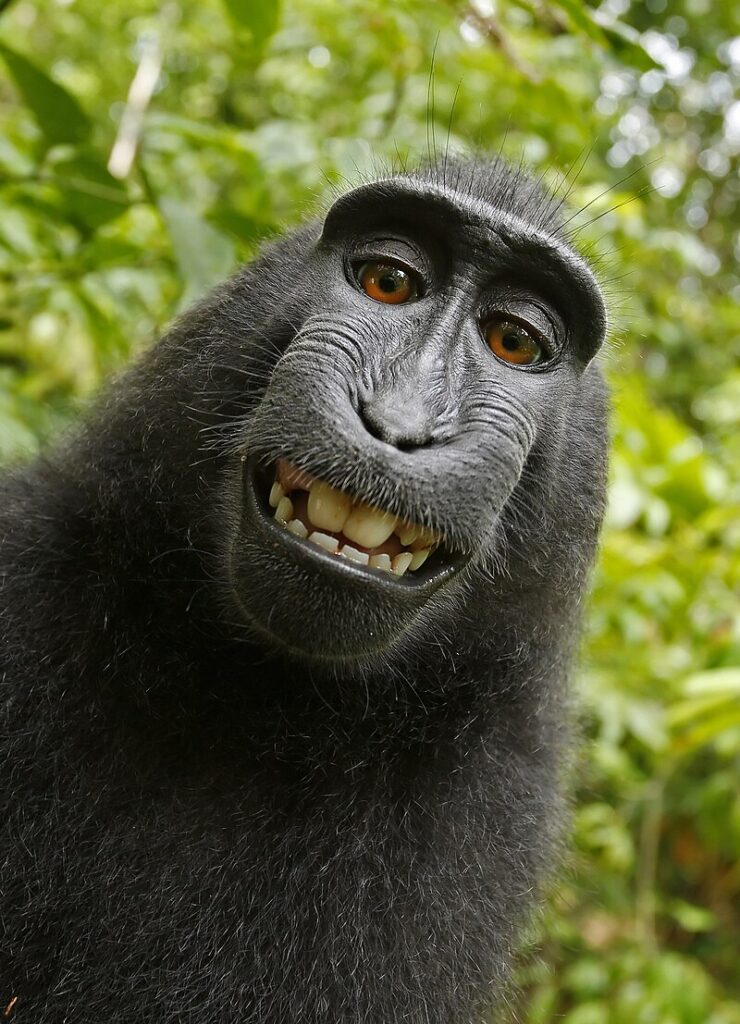
Fair warning, this entry is about the relationship between non-human intelligence and the United States intellectual property laws.
Give it a try. I personally find the two topics interesting, or at least more interesting than they initially appear.
I also find them helpful in understanding the process our federal government is currently undergoing in its legislation of artificial intelligence. Another hard topic to grasp, but very worthwhile to keep up on.
And wouldn’t you know it, these topics are also excellent examples for explaining a couple foundational aspects of our intellectual property laws in an approachable way.

Let’s start with the basics. Why do we even have patent and copyright laws in the first place?
At least according to the framers of our Constitution in 1787, it was to “promote the progress of science and useful arts.”
Seems like a good enough reason. And back in 1787, they also thought the best way to accomplish that purpose was “by securing for limited times to Authors and Inventors the exclusive right to their respective writings and discoveries.”
Since that time, two hundred years of law making has made the rules slightly more complex.
So for this introductory entry, let’s keep it simple and only worry about two words.
What do “Author” and “Inventor” mean?

The upfront answer is “Author” and “Inventor” mean only a human being.
And it isn’t that way simply because the issue has never come up.
In fact, the U.S. intellectual property laws have long recognized rights for non-human entities. They can own intellectual property rights, just the same way humans can. They can actually even apply for intellectual property rights on behalf of a human “Inventor” or “Author”.
Apple and Shutterstock acquired a number of their patents and copyrights that way.
And it’s not just the corporations, even the animals are getting into the mix.

That’s a pretty happy monkey right? It’s a wild macaque.
It took that picture. Just like you did with your phone the other day. It did it after it stole the camera from a wildlife photographer. Almost like it knew exactly what it was doing.
And you know what, macaques and a lot of other primates are actually quite smart. Kanzi, a bonobo, could speak with humans.
And if we are getting really honest, macaques can play pong only by thinking about it.
Don’t worry, some humans can do much more than that. We are still on top.
Anyway, if you are a human, you own the copyright rights to any selfie (or photo in general) that you take.
But what about the monkey?

Well, when PETA sued the wildlife photographer to try and get the monkey that same status, they lost. Turns out, congress never “secured” copyright rights to animals. If congress wanted to, they should’ve said so.
The same is true for works produced by another type of non-human intelligence: generative AI.
It’s not that the “writings and discoveries” of generative AI don’t potentially “promote the progress of science and useful arts”, congress just hasn’t “secured” rights for it. So, the AI lawsuits lost for the same reason the monkey did.

Stay tuned, congress might change that soon. The President’s executive order is the start of that process, which isn’t exactly a rapid one.
But I suspect there is a lot of interest by the more traditional non-human entities (corporations) to change the current set up. Especially the pharmaceutical corporations, whose robots are getting pretty darn good at biochemistry.
And if we start doing that, maybe we need to also reconsider how we treat animal intelligence.
But for now, there are no “secured rights” for generative AI as an “Inventor” and “Author”.
Wonder what those framers would think about all this.

